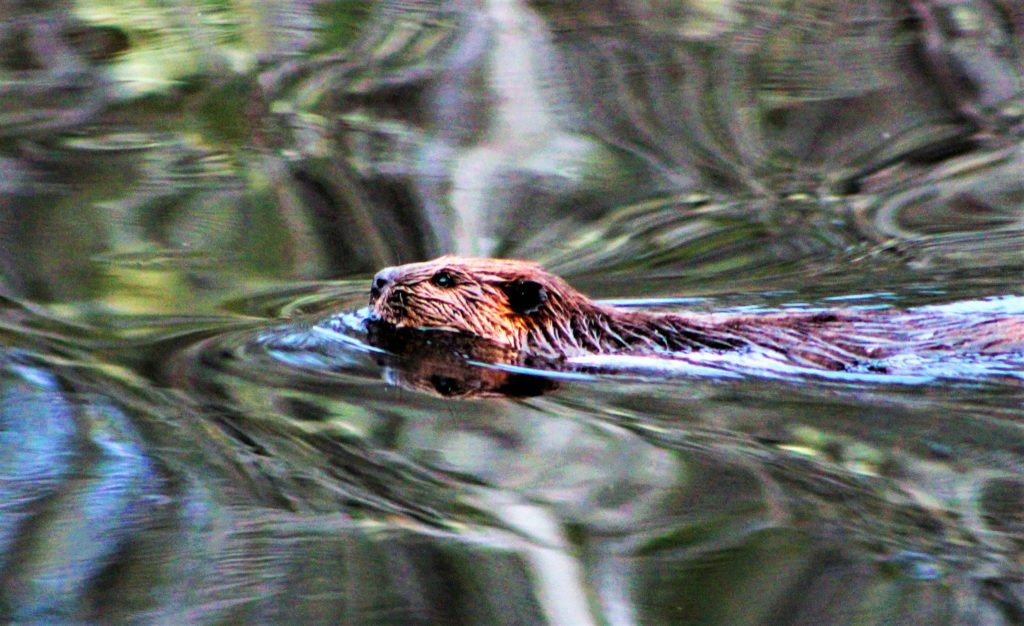The heartbeat of our wetlands

May 21, 2019
By Nate Smelle
One of my very first assignments as a reporter working for Bancroft This Week was to write an article on the state of turtles in North Hastings and throughout Ontario. While writing that initial story back in 2012, I reached out to Dr. Sue Carstairs of the Kawartha Turtle Trauma Centre (now the Ontario Turtle Conservation Centre) to get the scoop from those who would know best.
From this first conversation with Carstairs, I learned that seven of the eight turtles native to Ontario are listed as species-at-risk. In explaining how habitat loss and fragmentation, road and boat mortality, hunting, and poaching by the pet trade are the main causes of declining turtle populations in Ontario, she also made it clear how humans are the biggest threat to turtles.
To illustrate the vital role turtles play within its environment during an interview for another article, Carstairs described how removing an adult snapping turtle for example would negatively impact the ecosystem where it lives. On average, she said an adult snapping turtle will lay 1,500 eggs in order to generate a single adult. Adding to their ecological value, Carstairs pointed out how these eggs and the hatchlings they produce are an important food source for many other species of wildlife such as birds, fox, raccoon and skunks.
Covering another presentation by biologist Graham Cameron on turtle research being conducted by the Ministry of Natural Resources and Forestry in 2014, I discovered how in June many turtles travel great distances – nearly 20 kilometres in some cases – to return to their preferred nesting site. Virtually impossible to travel more than a kilometre in this region without running into a road, he said this becomes one of the most dangerous times in a turtle's life as they cross roads and rivers just to return to these places.
A couple years later, I connected with Turtle Guardian Kelly Wallace of the Think Turtle Conservation Initiative after noticing the bright green Watch 4 Turtles signs popping up throughout North Hastings. She explained that the best way for people to help Ontario's turtles is through public education. Once the public becomes aware of humanity's role in declining turtle populations, Wallace believes people will feel inclined to help protect them.
She also taught me about how turtles serve humans and other species by keeping our waters clean. Acting as janitors of our lakes, rivers and wetlands, she said turtles maintain balance within their ecosystem by scavenging dead fish, plants, insect larvae, tadpoles and other decaying organic matter.
Prior to attending the recent presentation by OTCC education coordinator Wendy Baggs at Turtle Fest last weekend I expected to hear many of the same fascinating lessons I have learned about these amazing and mysterious reptiles in years past.
With assistance from her Turtle Ambassadors, Baggs demonstrated to those in attendance how to safely and properly help turtles – including large snapping turtles – across a road. Years earlier I had learned this technique of picking up a snapping turtle from the back, so that you are out of reach of being bitten; and then carrying it in the direction it was originally heading.
On several occasions this lesson has served me and the turtles I have crossed paths with very well. To emphasize how important it is to leave turtles in the ecosystem where you find them, Baggs described turtles as “the heartbeat of our wetlands.” She then went on to explain how when turtles enter hibernation in November they slow their heartbeat down from 30 to 40 beats per minute to about one beat every 10 minutes.
During one of my first interviews with Dr. Carstairs, I asked her how turtles have managed to establish an evolutionary history some 220-million years deep? To which Carstairs replied: “Their slow and steady approach to life seems to have worked for them over the last 200+ million years. They are very gentle, peaceful creatures going about their business, doing a good job performing their ecosystem services diligently while plodding forward humbly on the evolutionary path.”
Our species could benefit on so many levels if we were to learn from these ancient masters of evolution by adopting a slower and more meaningful way of life. At the very least, when driving on any road with water or wetlands on both sides from May until November, we need to slow down and keep your eyes on the road … this is the season of the turtle in North Hastings.
|
